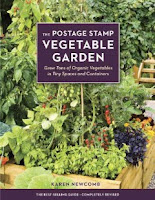Click for - The plant lover's guide to Sedums.
Sedums are easy-to-grow flowering perennials with succulent foliage.
Their color changes dramatically with the seasons—in fall, they are rich
and earthy while in summer their flowers come in vibrant shades of pink
and yellow.The Plant Lover’s Guide to
Sedums includes everything you need to know about these beautiful
gems. Plant profiles highlight 150 of the best varieties to grow, with
information on zones, plant size, soil and light needs, origin, and how
they are used in the landscape. Additional
information includes designing with sedums, understanding sedums,
growing and propagating, where to buy them, and where to see them in
public gardens.
The Plant Lover’s Guides offer a rich source of information on both new
and classic garden plants. Written by enthusiastic experts, they
recommend the best varieties for different situations, inspire ideas for
new plant combinations, and are packed with resources
for the home gardener.






